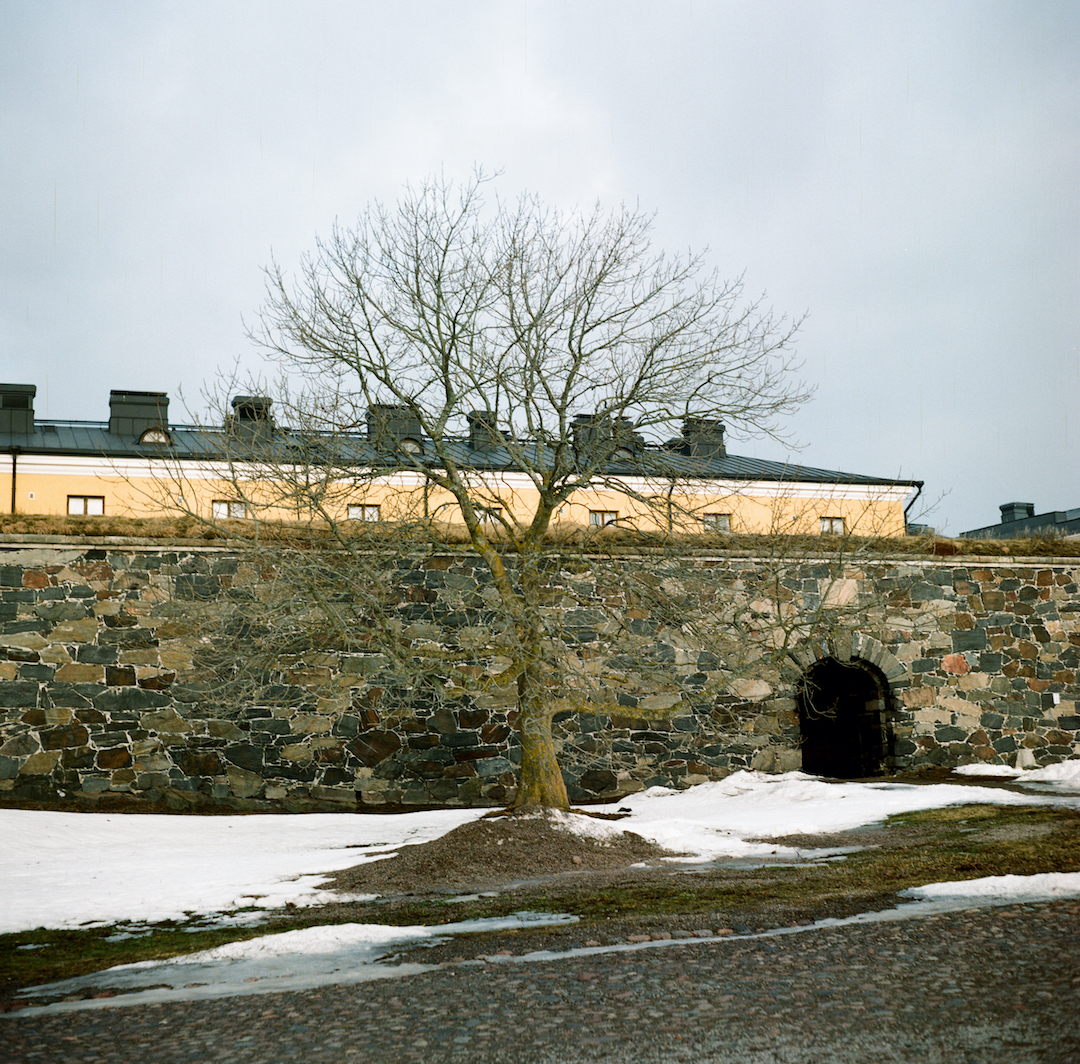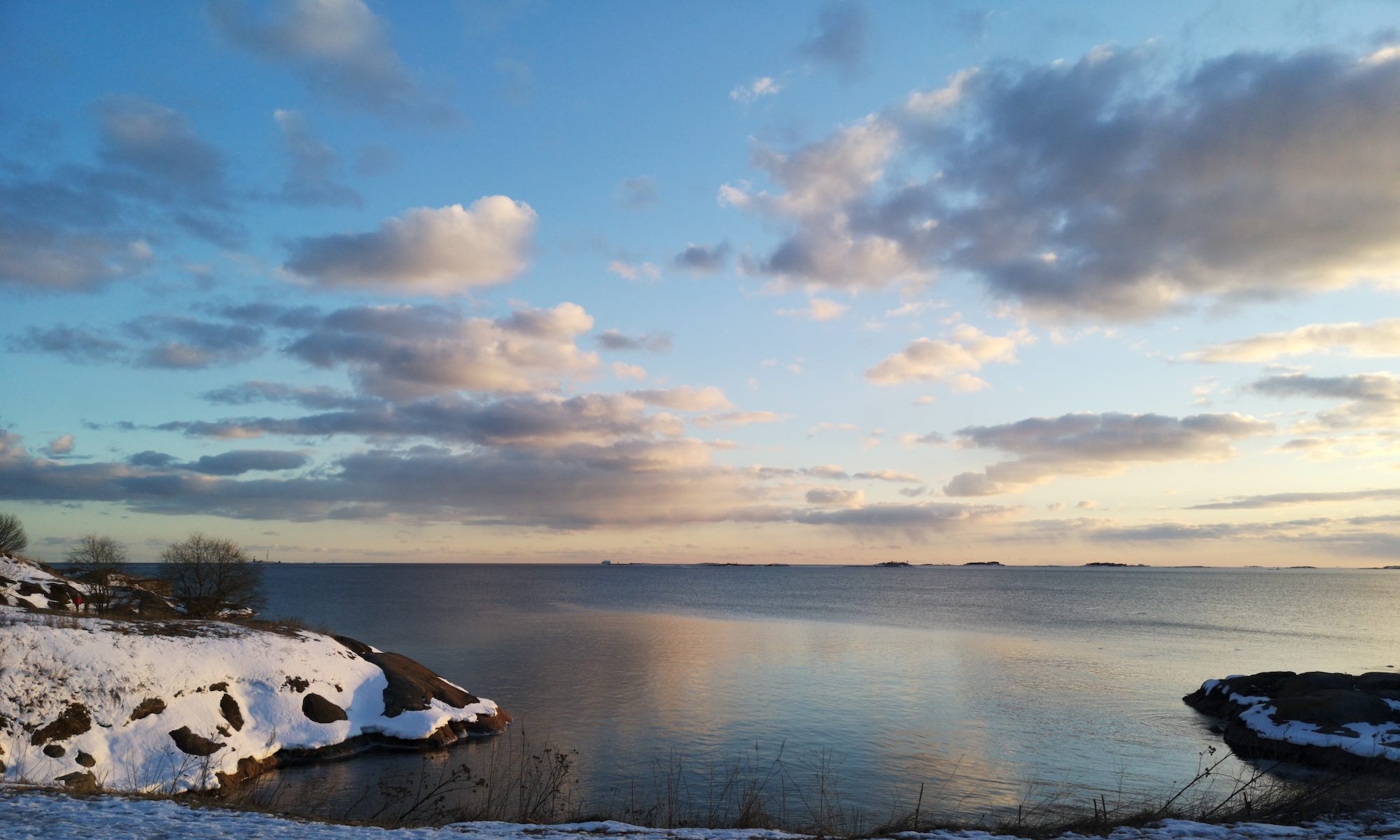Wilhelm Blomberg, Marianna Vivitsou, Lili-Ann Wolff

During the spring 2021 the SveaSus team facilitated the course “Phenomena-based learning in Suomenlinna: Sustainability and world heritage learning”. The course was initially planned as a site-specific course at Suomenlinna, but due to COVID-19, we had to adapt the course to an online learning environment via Zoom.
The course is connected to the research project SveaSus and the overall aim of the course is that the students develop an understanding of sustainability pedagogy through a phenomenon-based teaching approach. The theories and methods of phenomenon-based learning are still quite underdeveloped, which urgently calls for both more research and purposeful development of practice.
This spring the course used a multimodal approach for delivery with lectures, seminars, workshops, and tutorials, and encourages expression in various languages (with Swedish being the primary language of instruction). The students were encouraged to think creatively and imaginatively and use their ideas, bodies and technologies for aesthetic and narrative ways of expression.
The course design
The course schedule consisted of a two-hour introduction lecture followed by three seminar days of six-hours each. The first two seminar days were filled with lectures, assignments, and audiovisual-visual storytelling workshops, while the final seminar day was devoted to presentations of the audio-visual group works followed by reflective discussions in break-out rooms on the course themes and methods. Additional to the three seminar days, three one-hour workshops on improvisation in smaller groups took place.
The world heritage site of Suomenlinna was intended as the course’s site-specific learning environment, but we had to be flexible and create another kind of course because of the pandemic situation. However, learning about Suomenlinna is something else than learning in Suomenlinna. We thus had to rethink and design a course that made use of the students’ own local surroundings wherever they lived.
Luckily, the Finnish sauna tradition has lately been added to the UNESCO intangible cultural heritage list. Saunas are easier accessible than Suomenlinna in times of lockdown. They are found in most Finnish households, and most Finns have already a well-established relationship to the sauna. The combination of the sauna culture and the world heritage site Suomenlinna allowed the students to explore and compare a tangible and an intangible heritage.
The lecture topics ranged from sustainability education to world heritage generally as well as Suomenlinna specifically. The distinct themes included biodiversity, co-teaching, multilingual learning, embodiment learning, and the history of bathing and sauna.
A learning dimension that the zoom-environment made possible was the opportunity to invite guest lecturers from near and far. Among the guest lecturers were the environmental educator Riitta Nykänen, and the architect and sauna-entrepreneur Tuomas Toivonen. The choreographer Veli Lehtovaara, who works with exploring and relating to the environment through corporeal means, held workshops. Likewise, the facilitator and teacher of improvisation Andrew Morrish, joined the course all the way from Australia with a lecture and three workshops on improvisation.
The course assignments consisted of embodied exercises in outdoor environments, a meta-reflective sauna-diary written or audiotaped after bathing, an audio-visual storytelling project performed as a group work and an essay in which the students reflected upon the course topics in relation to educational theories. The biggest assignment during the course was the audiovisual group project on digital storytelling.
The audio-visual project
Group work took place in two main types of arrangement throughout the course. First, the group arrangement involved discussions during the course days where lectures and workshops were delivered via Zoom. Following the lectures and workshops, the students discussed their experiences and other topic-related issues in breakout rooms.
Second, the video stories offered a shared orientation for the work in groups. This means that the groups set up meetings where the members got to know one another, set common goals and committed to fulfil their tasks by sharing roles and responsibilities.
Third, the group work involved tutorial sessions dedicated to the audiovisual storytelling project. The tutorials made it possible for the students to discuss how their stories and their groupwork evolved in small groups (4-5 members). The breakout discussions and tutorials were hosted by both students and teachers.
While it was every group’s responsibility to work collaboratively, set the grounds of the collaboration and choose the phenomenon for storytelling, the students organized independent meetings to evaluate and coordinate the progress of the work. The groups agreed on the purpose of the story and the metaphors that would convey their perspectives. Likewise, the narrative methods and audio-visual techniques made it possible to unfold layers of meanings underlying the selected topic. By use of mainly smartphones, the students shot scenes and weaved with editing software into short stories (2-3 min. long) in video format.
The four videos that resulted from the group work tell stories about world heritage in the Anthropocene, pose questions about access to water, discuss feelings of disconnectedness in a time of limitless connections and point out how a close contact with nature can make people happier.
Wrapping up
We were quite pleased with how everything on the course turned out despite its alternative format. According to the students’ opinion the course suited the Zoom-platform well, even though the six-hour long days felt exhausting. The students liked the balance between lectures and tasks, and especially the contribution of guest teachers.
Next fall our team will analyze the data collected during this spring and continue developing phenomenon-based learning on the sustainability and world heritage issues. We look forward to realizing the course in Suomenlinna next year!
But more of that in the fall! Now off to a well-deserved summer vacation!

